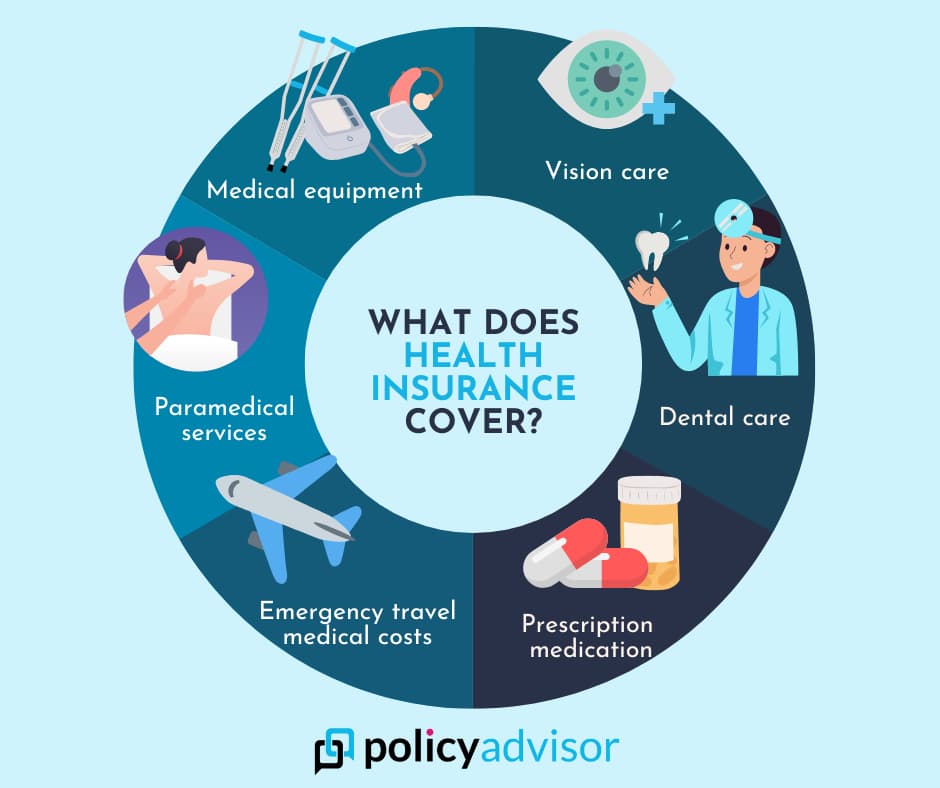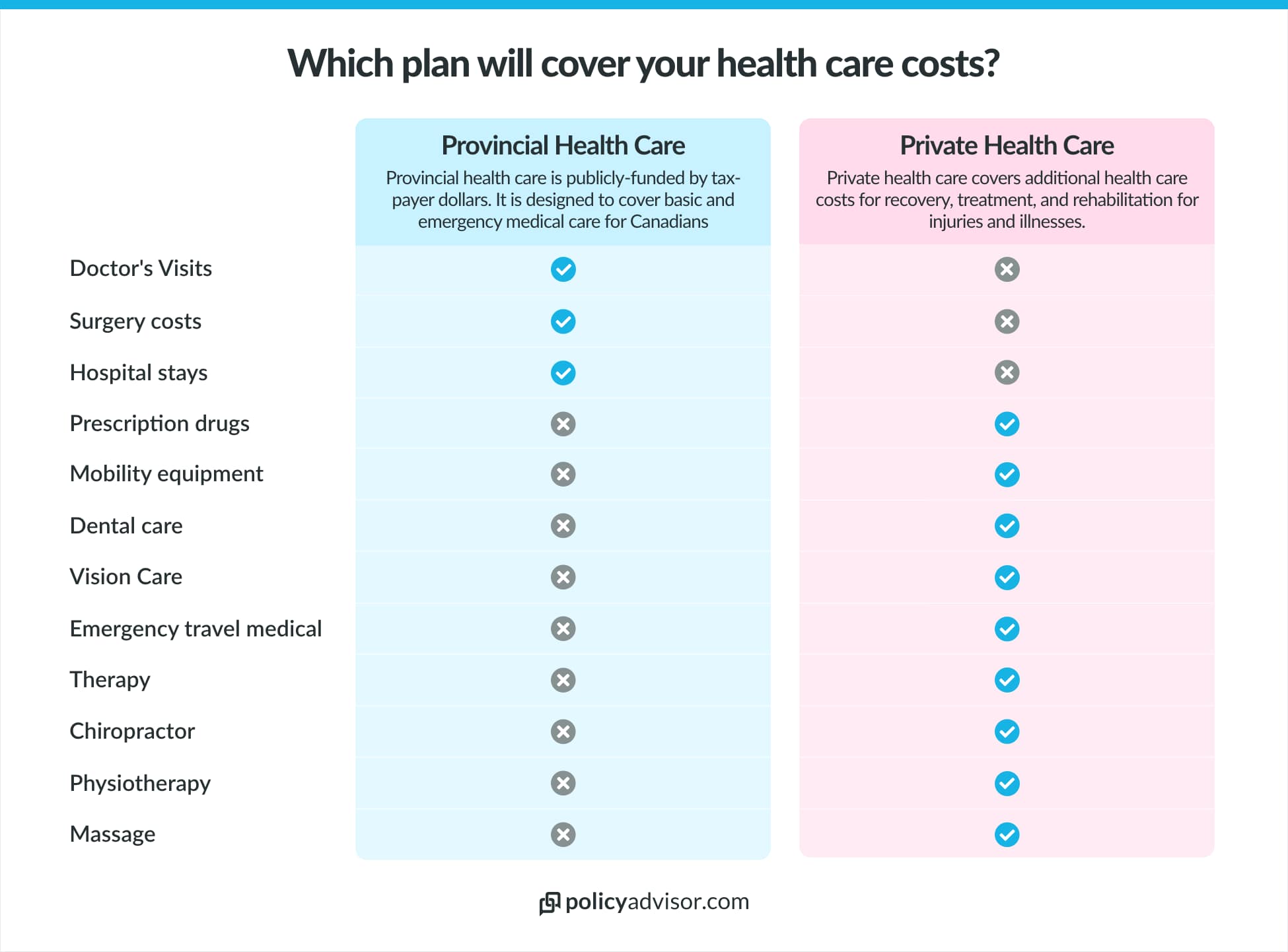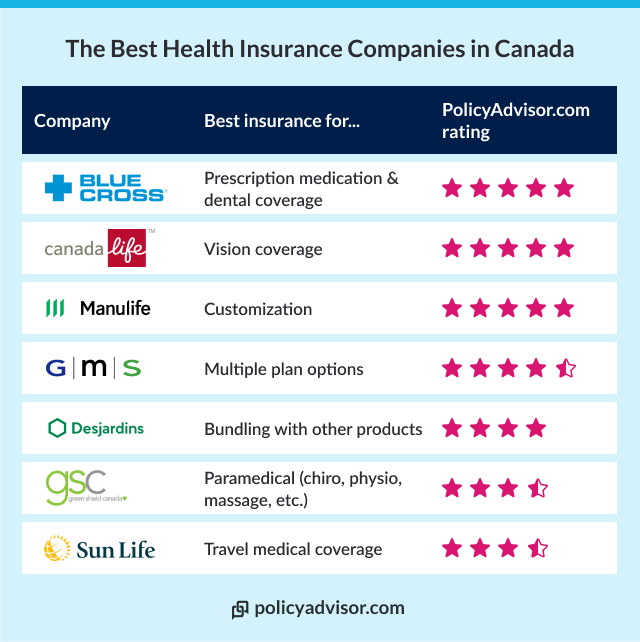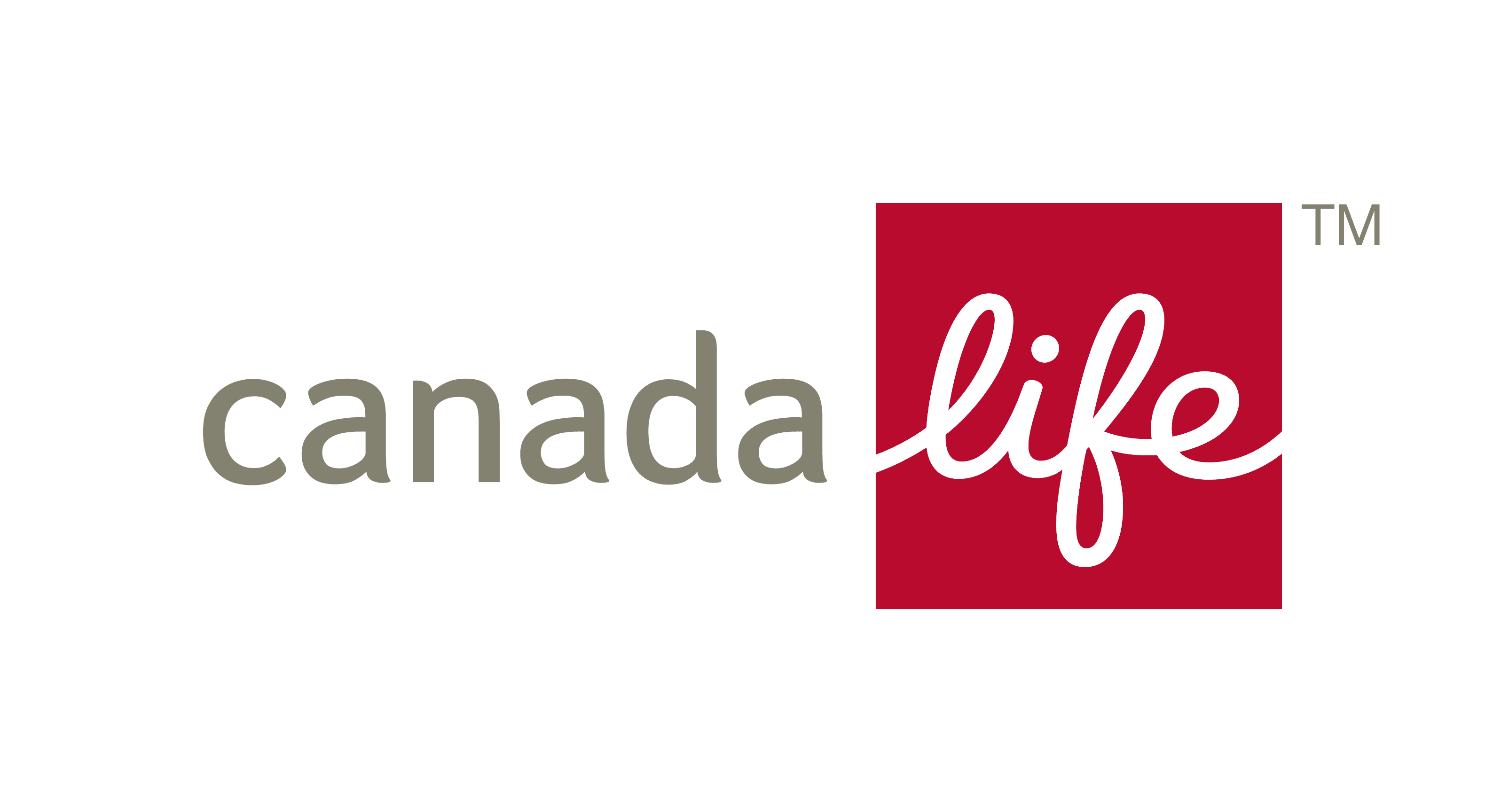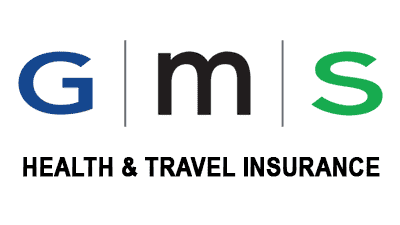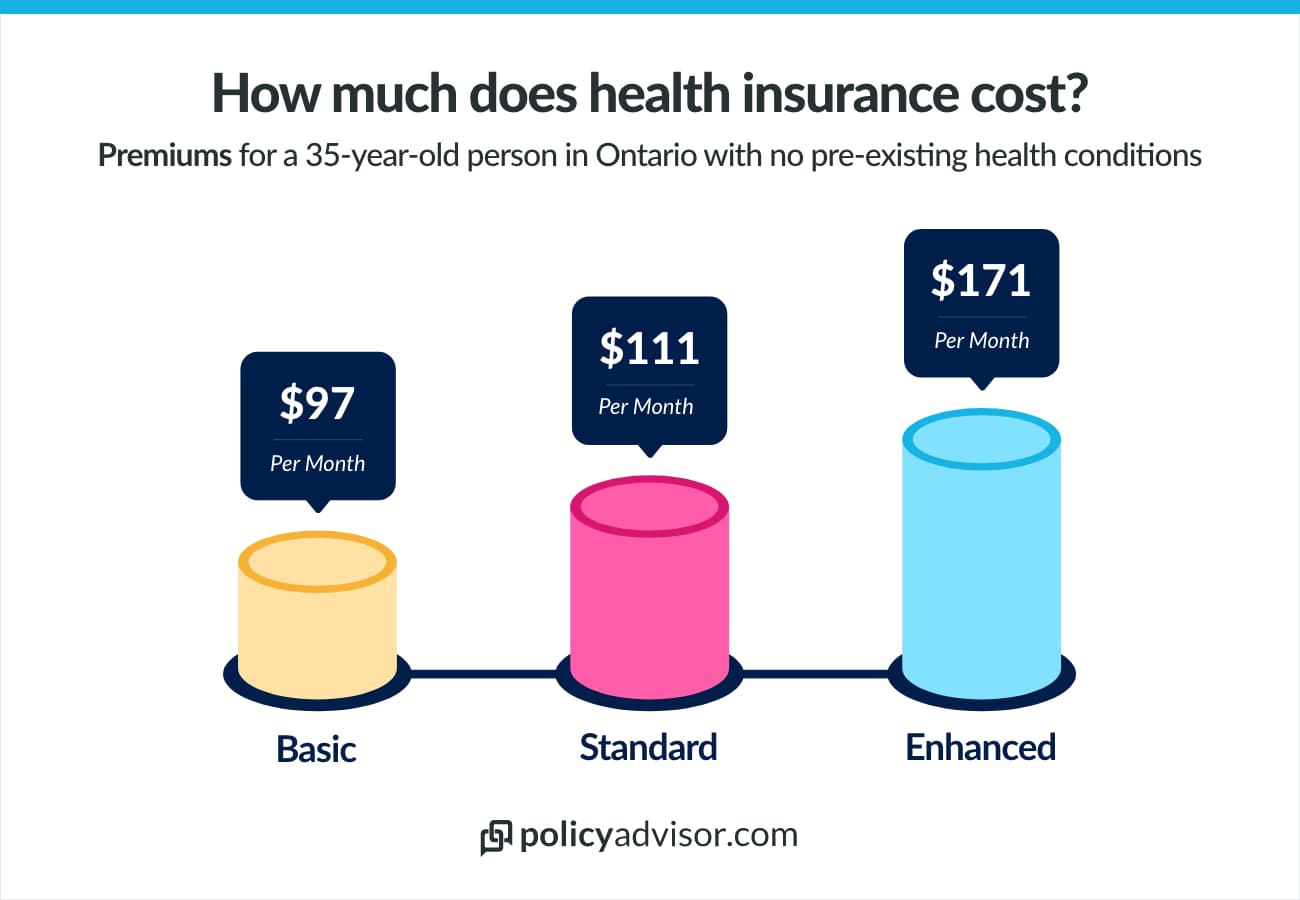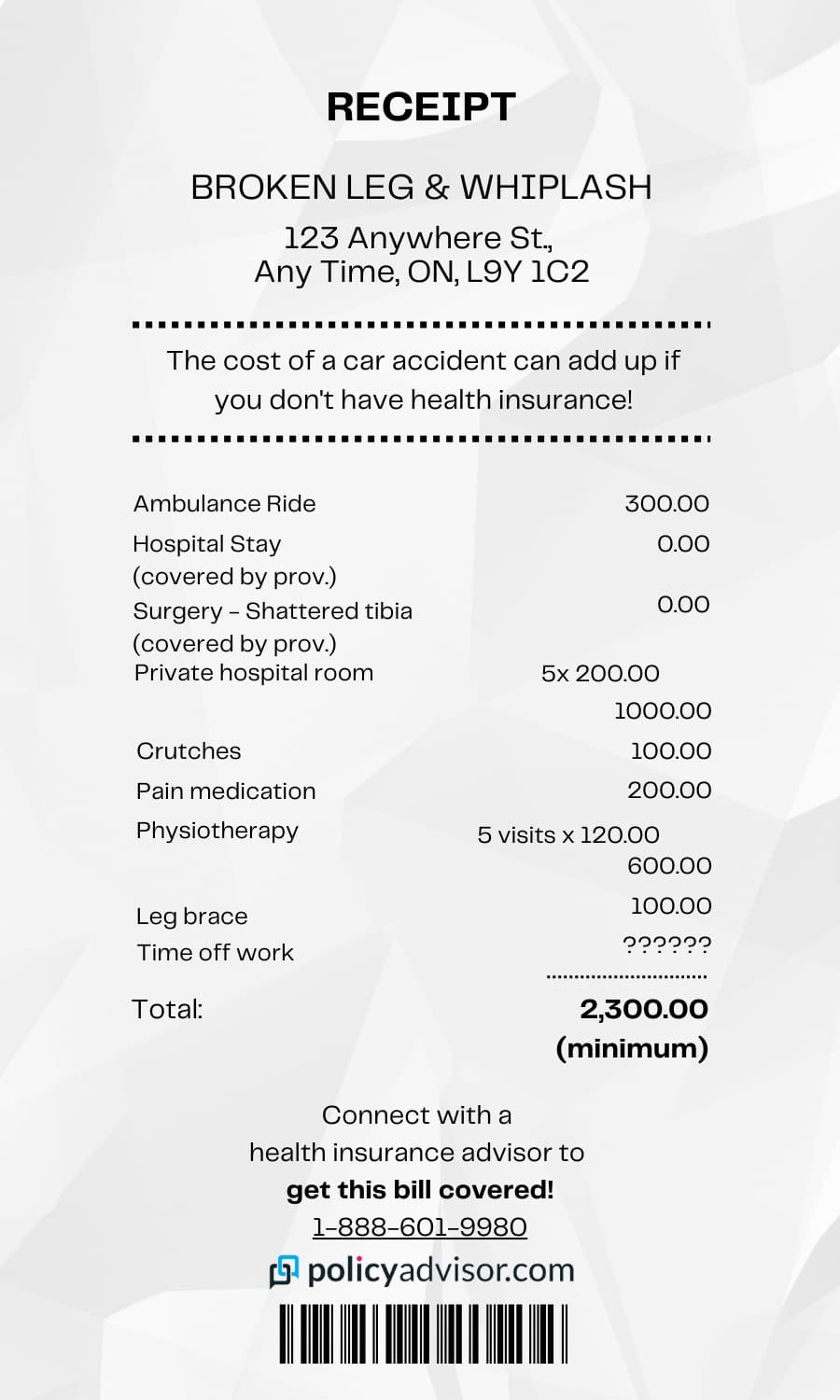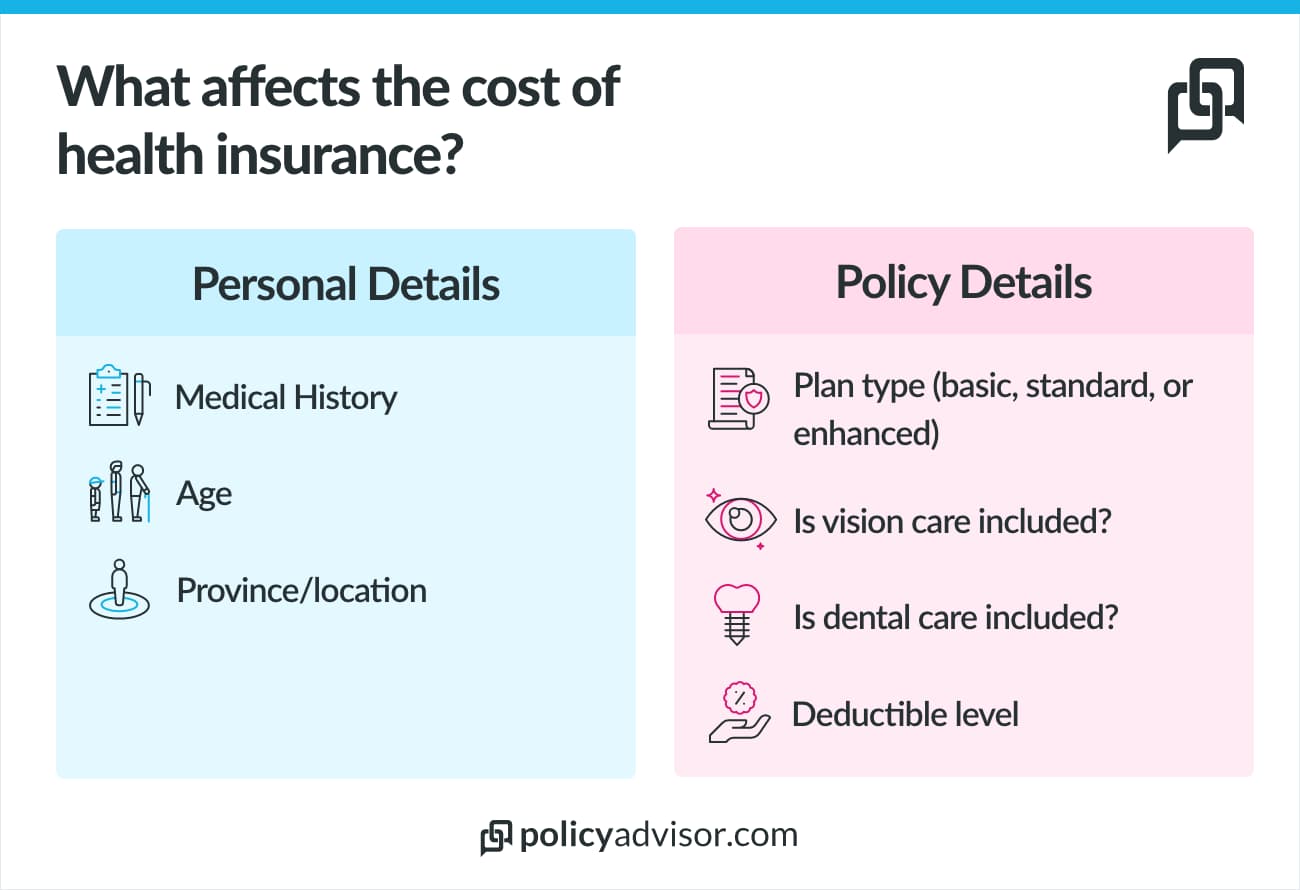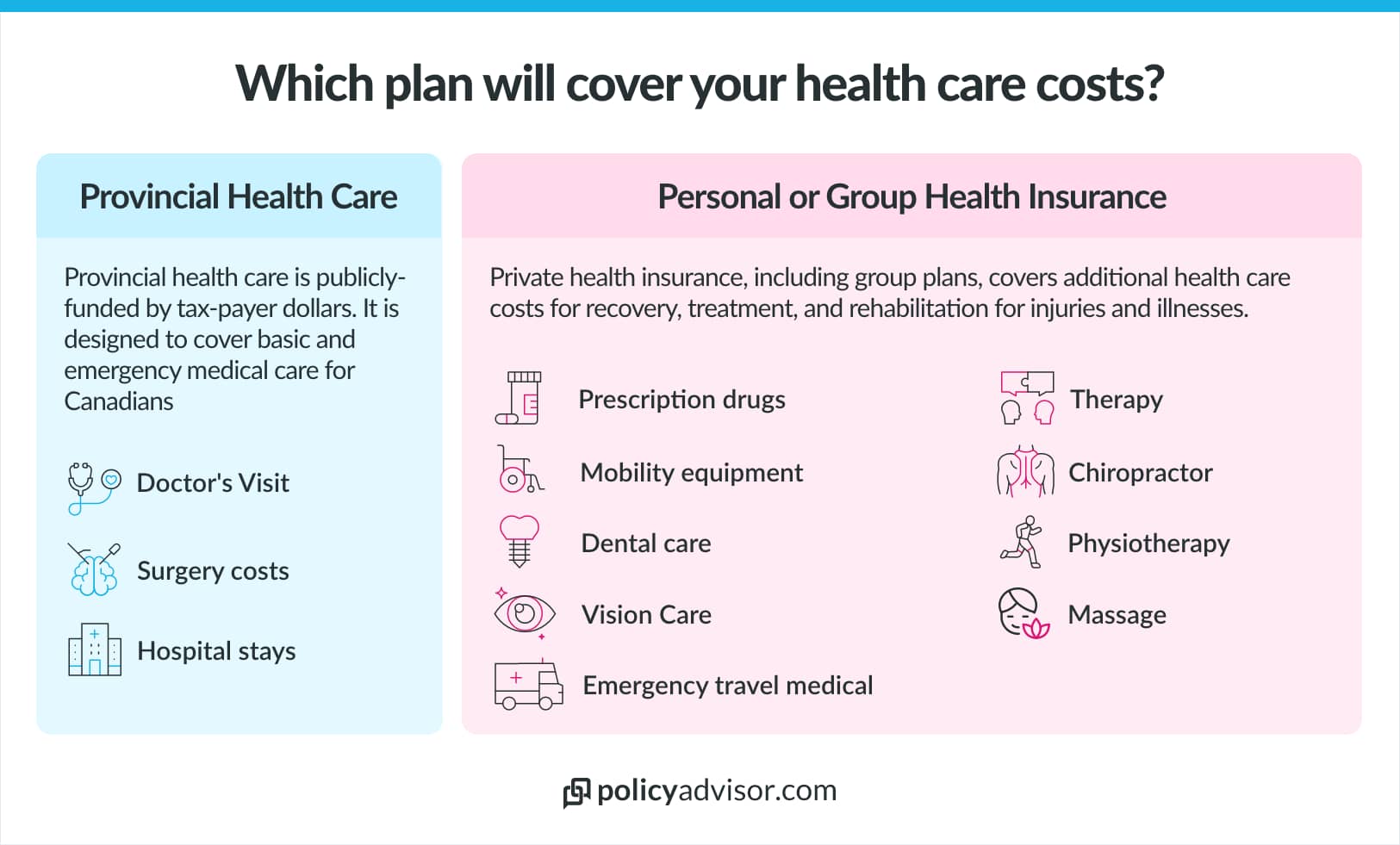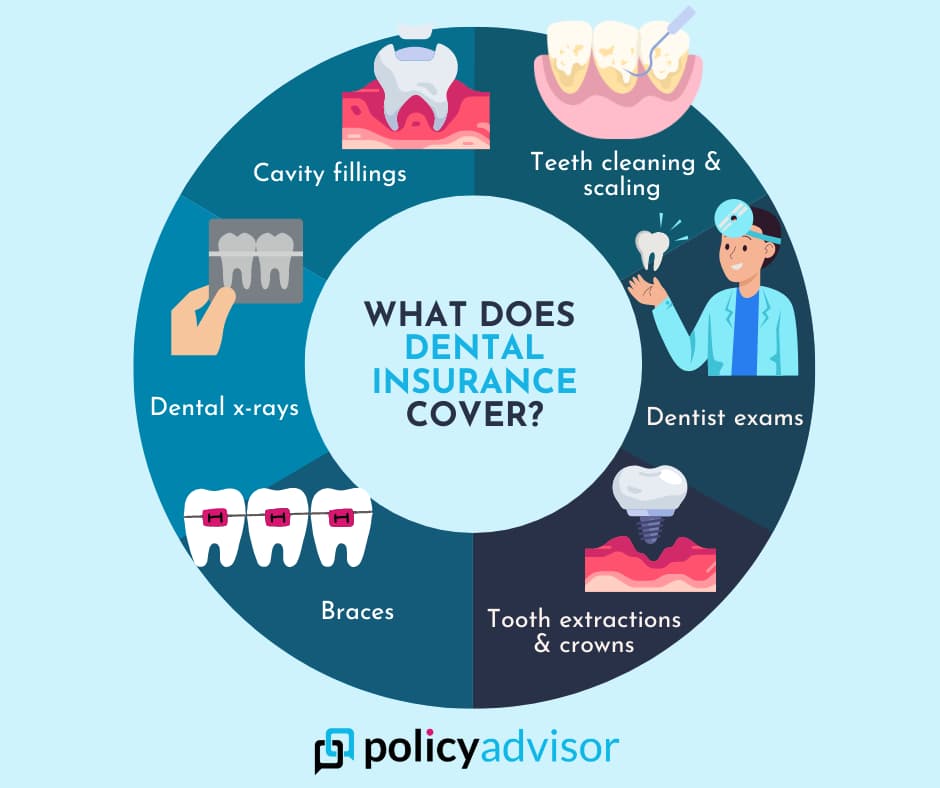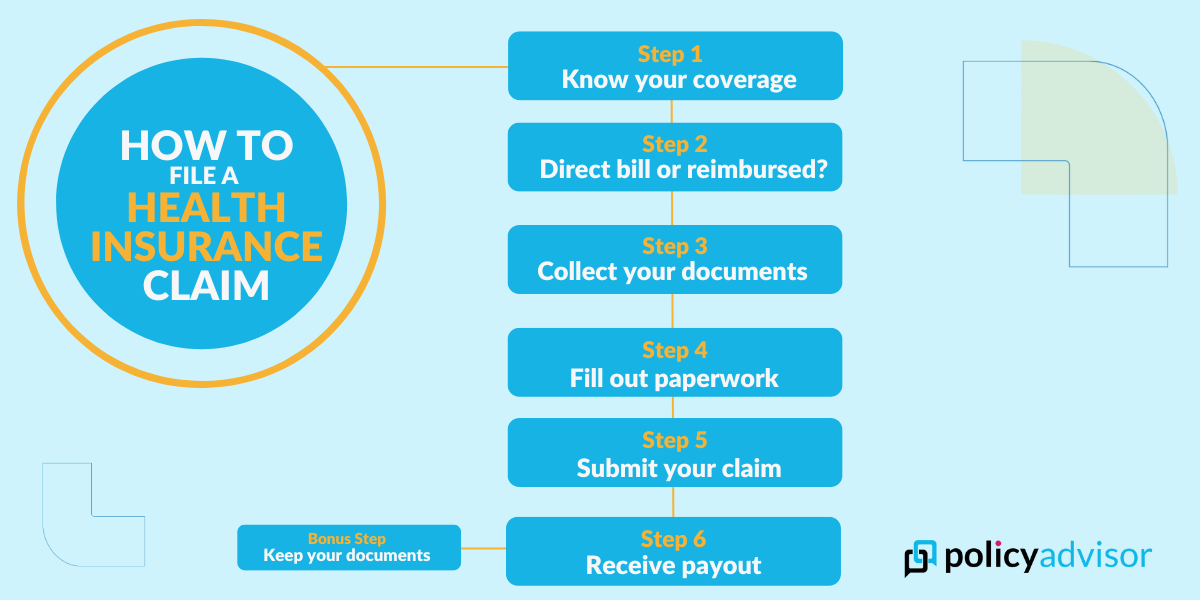Being self-employed has a lot of upsides. You get to be your own boss, set your own hours, and plan your professional life on your own terms. The downside? No group health insurance.
When you’re your own boss, it’s up to you to figure out your finances—you write your own paycheck. But having to pay for health care expenses out-of-pocket for both emergency and preventative care can cause that paycheck to dwindle. This is where extended health care insurance comes in. Read on to find out how to choose the best health insurance plan for your budget when you’re self-employed.
What is private health and dental insurance?
Private or extended health insurance provides coverage for medical, dental, and vision care expenses. Health insurance plans can vary in terms of coverage amounts and benefits. The insurance company requires individuals to pay regular premiums, which can be monthly, quarterly, or annual payments in exchange for the coverage. The cost of these premiums varies depending on factors such as age, health status, the extent of coverage, and the insurance provider.
Private vs. government healthcare
Private health insurance in Canada works alongside the publicly funded healthcare system to provide additional coverage for services not covered by the government. As someone who is self-employed, you are entitled to provincial health insurance, but it may not be enough. The provincial health insurance is designed to provide basic and emergency healthcare only. In short, public health insurance handles the immediate care needed to treat injury and illness while private health insurance covers the cost that may be required to recover fully from that illness.
What kind of health benefits can I get if I’m self employed?
Health insurance comes in a variety of tiered plans, depending on the level of coverage that you’re looking for. In general, these health insurance packages come in basic, standard, or enhanced, each with ascending levels of coverage and premiums—in other words, the more the plan covers, the more it will cost.
Coverage tiers and costs may look like*…
| Plan Type | Coverage | Price |
|---|---|---|
| Basic health plan | Prescription drugs – 70% of the first $750 (up to $525 every year)
Dental – 70% of the first $575 (up to $400 every year) Vision – $150 every 2 years Travel – $5 million in emergency health coverage for the first 9 days of each trip |
$97/month |
| Standard health plan | Prescription drugs – 70% of the first $750 and 90% of the next $4,972 (up to $5,000 every year)
Dental – 80% of the first $400 and 50% of the next $860 (up to $750 every year) Vision – $250 every 2 years Travel – $5 million in emergency health coverage for the first 9 days of each trip |
$111/month |
| Enhanced health plan | Prescription drugs – 90% of the first $2,222 and 100% of the next $8,000 (up to $10,000 every year)
Dental – 100% of the first $500 and 60% of the next $700 (up to $920 every year) Vision – $250 every 2 years Travel – $5 million in emergency health coverage for the first 9 days of each trip |
$171/month |
*Quote for a 35-year-old person in Ontario with no pre-existing health conditions.
🦷 Dental insurance for self employed
One of the most common types of insurance coverage that self-employed individuals search for is for dental care. It’s hard to ignore tooth pain, but getting it fixed can come at a significant cost. To get dental costs covered, self-employed people can get private health benefits. Most health insurance plans have dental built right into the plan cost, but some may only have it for standard or enhanced tiers of coverage.
Private insurance can cover dental services such as:
👁 Vision care insurance for self-employed
Are you squinting as you read this? You might need new glasses. Individual health coverage also often has vision care coverage built into their packages, similar to dental coverage. Usually, basic packages include an eye exam at least once every two years and some coverage for glasses, but plans can include other services too.
Some personal health insurance will include the following for eye care:
Deductible options for health insurance as a self-employed individual
Understanding deductible options for health insurance is a critical aspect for self-employed individuals as they have to consider all of their out-of-pocket expenses. The deductible is the amount you must pay out of pocket before your insurance begins covering medical expenses. High-deductible health plans typically come with lower monthly premiums. That sounds nice at the beginning, but remember, every time you have a health claim, you’ll have to shell out the deductible. It’s important the deductible is a reasonable amount for you to spend at any point, whether you have lots of income that month or not.
Striking the right balance is essential. Self-employed individuals should carefully assess their health requirements and budget to choose a deductible that provides adequate coverage without breaking the bank.
Are health insurance premiums tax deductible for self-employed in canada?
Yes. Self-employed Canadians can deduct their health insurance on their yearly income tax return under the Medical Expense Tax Credit. In order to qualify for this tax deduction, you have to be the sole proprietor of your business and your business’s income must be your primary source of income.
To claim your health insurance on your taxes if you’re self-employed, you will need to:
- Fill out line 330 on your tax return
- Provide supporting documents such as receipts for your premiums
- List prescriptions for items and services to prove they were medically necessary
You may also claim medical expenses on behalf of your dependents as well. In order to make sure you’re filing property, always consult a tax professional.
What is the best health plan if I’m self-employed?
There are a lot of options out there for health insurance—it can be overwhelming to pick the “right” one. The thing is, there truly isn’t one true “right” health insurance for every Canadian. It all depends on your individual circumstances and your family’s needs.
But, to get you started in choosing your plan, we’d like you to meet some of our friends who are all self-employed.
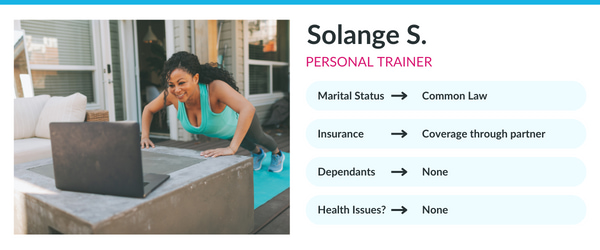
We suggest…
A standard plan.
Why?
Her spouse’s plan has fairly decent coverage for prescription drugs and dental insurance. Her husband’s plan would cover most of her needs, and this basic plan will make up the rest so that she doesn’t have to dip into her business income for out-of-pocket expenses. If she and her partner have dependants in the future, they may consider a more comprehensive supplementary plan.

We suggest…
An standard plan.
Why?
While Cindy has great coverage through her husband’s federal employee benefits plan, she doesn’t always have extra income to cover the remaining 20-30% of the medical service bills. Her work is seasonal and her husband’s work requires the family to move around a lot, meaning her income is inconsistent. Additionally, her three boys all require braces. Her husband’s plan will cover about 70% of the orthodontic work, but there is a maximum placed on each kid—a standard plan could make up for the remainder.

We suggest…
An enhanced plan.
Why?
While Danish’s daughter has coverage through his ex-wife’s employee benefits plan, Danish doesn’t have any coverage. As a self-employed business owner and single dad, every penny counts and as someone who is pre-diabetic, he needs to take his health seriously. When he buys an enhanced plan, he can budget his healthcare costs ahead of time, so he’s not stuck between choosing soccer fees for his daughter or emergency medical bills or other unexpected costs for health care.
Best health and dental insurance companies for the self-employed
At PolicyAdvisor.com, we work with over 30 insurance providers to bring you the best insurance coverage at the best price. For health and dental insurance, we have fantastic health insurance partners that can help you make the best health coverage choice for your family.
| Blue Cross (Ontario)
Blue Cross offers unmatched prescription and dental coverage without limits. They also have coverage that allows you to keep your insurability for life. They are a great option for those who are self-employed or for those who move on and off group benefit plans. |
| Canada Life
Canada Life offers comprehensive health, dental, and vision coverage for those who are self-employed. They have flexible plan options that can work with most needs of self-employed individuals. |
| Manulife CoverMe
Manulife offers health and dental insurance through its CoverMe Flexcare product. These plans are great for those looking for add-ons and flexible coverage. For example, they have products that are dental-only, vision-only, or even just coverage for drug costs after you front the first $10,000. |
| SunLife
Sunlife offers personal health insurance as one of its flagship products. They offer plans in the classic three-tier system—basic, standard, and enhanced—with ascending coverage levels depending on your needs and budget. |
| Greenshield (SureHealth)
SureHealth offers several levels of plans including three types of plans with guaranteed acceptance coverage—coverage for those who have existing health conditions or would otherwise not qualify for standard health insurance. |
| Desjardins
Desjardins offers health and dental insurance through their SOLO healthcare product. This product has two tiers, basic and enhanced, with vision care included in both and ascending coverage options for prescription medication and dental, depending on your coverage needs. |
| GMS
GMS also offers guaranteed acceptance health insurance in addition to three standard plans (OmniPlan, ExtendaPlan, and BasicPlan). Their products have no waiting periods and coordinate with their LifeWorks program, a digital wellness platform to promote physical and mental well-being. |
Get a quote for health insurance if you’re self-employed
If you’re self-employed, contact our licensed insurance advisors to get the best quote for health insurance. Our insurance experts will ask questions about your family’s health and lifestyle to find a supplemental health insurance package that has a great price and comprehensive coverage.
Self-employed Health Insurance
Frequently Asked Questions
How much is health insurance per month for a single person?
The cost of health insurance for a single person can vary depending on various factors, including your age, location, desired coverage, and the insurance provider. Monthly premiums can range from around $80 to hundreds a month depending on the person’s needs. To get the best quote for health insurance, get in touch with one of our advisors. Our expert advisors can go over your unique situation to find a health insurance solution that fits your situation best.
Is health insurance tax-deductible in Canada?
Yes. It is possible to deduct your health insurance premiums on your tax return in Canada. However, you must be the sole proprietor of your business and your business income must be your only source of income.
Can I get health insurance for my business?
Yes, you can consider offering affordable health insurance as part of your business benefits package. Many self-employed individuals choose to set up a small business health insurance plan to provide coverage for themselves and their employees, if applicable. The options available can vary, including group health insurance plans or Health Spending Accounts (HSAs). It’s recommended to consult with an insurance broker or advisor who specializes in small business insurance to explore the best options for your specific needs.
Find out more about group health insurance.
What if I’m newly self-employed, but had health insurance with my previous employer?
If you recently left a job that had a company group plan, many insurance companies will allow you to apply for guaranteed issue health insurance. Because they covered you before, you can skip the medical questions and keep your coverage—as long as it’s within 60-90 days of your employee benefits ending. This might be a great option if you have health issues, however, it is always best to shop around to find the best rate. Sometimes skipping the health questions will cost you extra! The less underwriting required, the more expensive the health benefits plan may be.
Can a self-employed person get group benefits?
No. If you are self-employed, you are likely not able to access group benefits unless you are a dependent on a spouses plan or have coverage through professional group association. To make sure your health care needs are met and your expenses are covered, we recommend buying personal health insurance. If you are a small business owner, you may choose to get a group plan for your employees that you can also participate in.
What other insurance should I have if I’m self-employed?
To fully financially protect yourself and your employment income as a self-employed individual, you should also consider disability insurance, critical illness insurance, life insurance, liability insurance, and more.
You can find out more information about these insurance products on our blog post: Insurance for the self-employed: what coverage do entrepreneurs need?


 1-888-601-9980
1-888-601-9980
